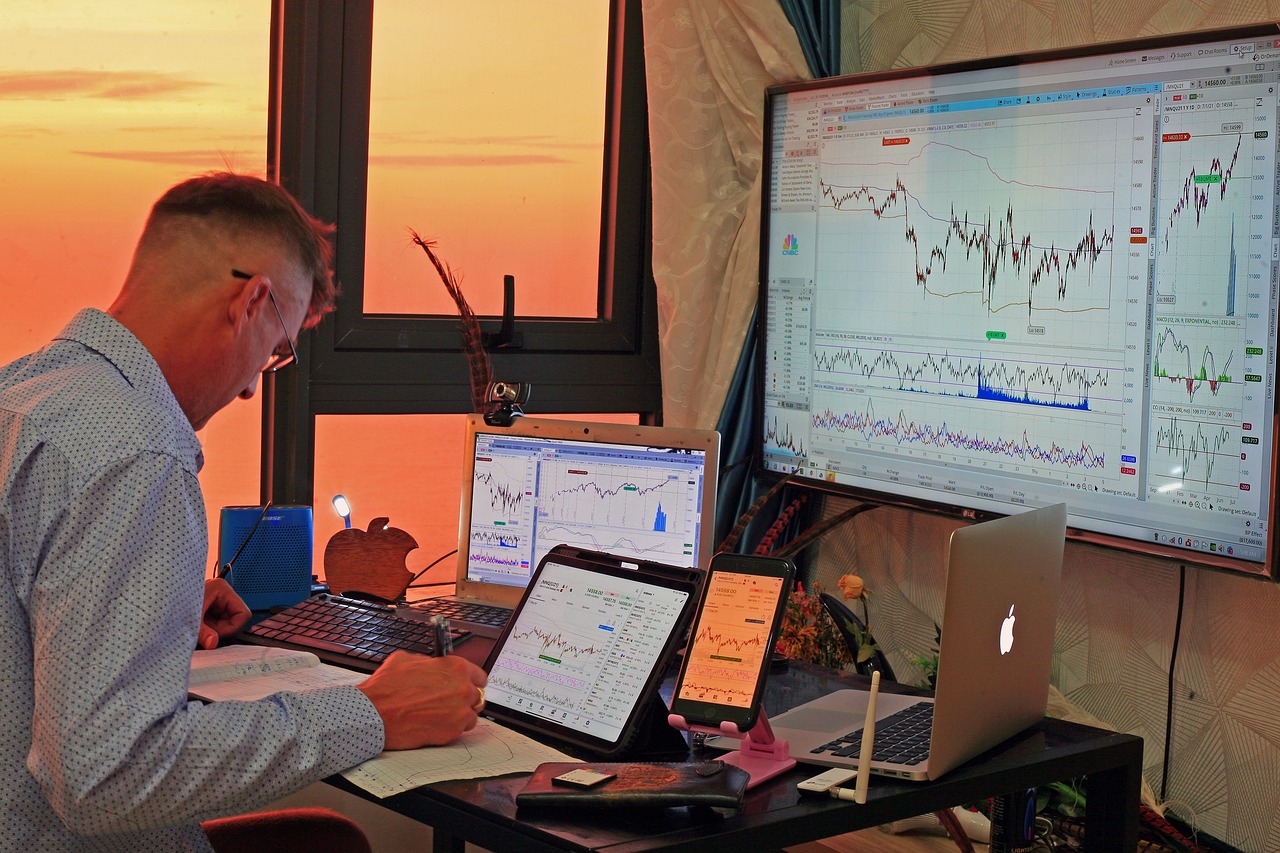The forex market is a highly volatile market, and as such, it’s difficult to predict price movements. However, with the right strategies and a good understanding of how the market works, you can make the right guesses about market trends.
This article discusses the best ways to predict the forex market trends and make profitable trading decisions. But before we go into that, let’s understand what forex market trends are.
What Are Forex Market Trends?
Forex market trends refer to the general direction of currency prices in the market. This can be an upward movement (uptrend), a downward movement (downtrend), or a sideways movement (ranging).
Forex market trends can also be short- or long-term. The ability of traders to understand these movements and what triggers them is what helps them make money in the market.
Forex trading involves the purchase of one currency while selling another. That’s why it occurs in pairs, as there must be a base currency and a quote currency for a forex transaction to be complete.
The continuous demand for one currency over the other results in a trend. The currency in greater demand will experience a continuous rise in value, while the one in less demand will experience a decline in value. But something can happen, and there would be a change in demand. The least demanded currency will start experiencing high demand and, as a result, start rising in value (experiencing an uptrend). The same thing happens to the more-demanded currency, which now begins to experience a downtrend.
There are factors that lead to these changes in the forex market, and they’re vital to every forex trader.
Factors that Influence Forex Market Trends
Economic growth
The strength of a country’s economy has a great influence on the value of its currency. A strong economy attracts investments from all over the world, which results in high demand for the country’s currency. Just like every scarce resource, the higher the demand for a currency, the higher the value.
Inflation
This refers to the continuous rise in the prices of goods and services in a country. The higher the inflation rate of a country, the lesser the value of its currency. Inflation affects the forex market greatly, as rises in commodity prices only diminish the purchasing power of a currency.
Interest rates
Interest rates are important factors in determining the value of a currency. Comparing the interest rates of two currencies will help you determine the direction of their prices. This is because a high interest rate is a delight to investors, as investments in the currencies and assets of a country with such an interest rate can only result in higher profits. An increase in investments in a country’s currency due to interest rates will equally increase the value of the currency.
Employment and wages
The level of employment and wages in a country signifies the strength of its economy. A rise in employment rate and a concurrent rise in the wages of citizens of a country shows that the economy is doing well. This attracts immigrants to the country, which results in increased demand for the country’s currency and eventually results in the rise of its value.
Trade and Capital Movements
The inflow and outflow of cash into a country affects the value of its currency. When a country starts exporting more goods or getting foreign investments, it results in a rise in the value of its currency. However, when it imports more than it exports, there’s definitely going to be a decline in the currency value.
Politics
Uncertainties in the political system of a country can only result in a fall in its currency value. This is because such occurrences cause investors to pull out, and as they do so, the economy of the country is affected.
The Best Ways to Predict Forex Market Trends
To predict forex market trends, you need to understand how the market works and know the key indicators. Here are the key strategies most successful forex traders use to predict a trend in the market:
1. Moving Averages
The moving average is one of the most popular techniques used to identify the direction of a forex market. It’s a system that calculates the average closing price of a forex market over a specified period of time. Once the middle of a trend is identified, it becomes easier for a trader to predict the future direction of the market.
However, the accuracy of this system depends on the length of the moving average. A fast moving average can give you false signals as it tends to react quickly to insignificant price movements. On the other hand, a slow moving average can provide signals when they’ve already played out, making it too late for you to jump into the trade. It’s always best to find a balance between the two.
2. Momentum
To determine the strength of an upward or downward trend, this method is combined with moving averages. Once a trader has figured out the momentum of a forex market trend, predicting its direction becomes a lot easier.
The Moving Average Convergence Divergence (MACD) is one of the best momentum indicators in the forex market. It measures the difference between a currency’s two exponential moving averages for smaller (12-day) and larger (26-day) periods.
3. Relative Strength Index
The relative strength index (RSI) is an oscillating indicator that is used to identify when a forex asset is overbought or oversold. When an asset is overbought, it means it’s overvalued and the price is expected to drop soon. However, when it is oversold, forex traders expect a rise in the asset’s value within a given period.
Forex traders look out for when the RSI value of an asset hits 70 or above (overbought) and drops to 30 or below (oversold). This enables them to figure out when to buy and sell an asset to make a profit.
Related articles:
4. Support and Resistance
The support and resistance chart is another key way to predict the forex market’s trends. It looks at the points on the chart where the price of a currency is expected to face obstacles. The support level, for instance, refers to the point where a falling price is expected to reverse and start moving back up, and the resistance level is that point where a rising price is expected to stop and start falling. In both cases, when the price breaks that point and maintains its direction, it’s expected to keep moving that way until it finds another support or resistance.
In other words, the support level shows where there would be a surplus of buyers, while the resistance level shows the price point where there is a surplus of sellers. For budding forex traders, this trading indicator is extremely important because it aids in timing when to enter and exit a market.
Final Thoughts
There are many ways to predict trends in the forex market, but the ones listed in this article are among the most popular and efficient ones.
Using two or more strategies will help you understand the charts better, even though some strategies are known to produce more accurate results than others. Most successful forex traders are experts at studying trends. They employ different forex trading tricks and tips to know why a price action is taking place and to know its next movement.
Hopefully, this article has shown you the different ways you can predict forex market trends and make profitable transactions.







